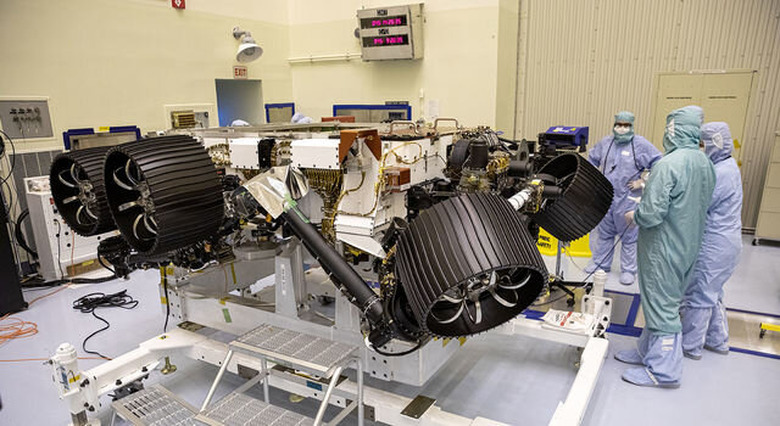NASA's Perseverance Rover Is Coming Together, Virus Or No Virus
- NASA's Mars 2020 rover, Perseverance, is coming together ahead of its expected launch to the Red Planet in July of this year.
- The mission is still on schedule despite the ongoing COVID-19 pandemic, and though it's still possible that that could change.
- Among other tasks, the rover will gather material samples from the planet's surface and ready them for transport back to Earth.
- Visit BGR's homepage for more stories.
NASA's Mars 2020 mission is still a go, despite the growing public health crisis in the United States and abroad. The launch of the Perseverance rover has been planned for years now and is rapidly approaching the finish line, with NASA staff reinstalling some of the robot's vital components and readying it for its long trip to the Red Planet.
As NASA's Jet Propulsion Laboratory explains in a new blog post, the tools the rover will use to snatch samples of the martian soil and ready them for eventual delivery back to Earth were recently integrated and tested, including the Adaptive Caching Assembly and the Bit Carousel.
The Perseverance rover will have many objectives to tackle once it arrives on Mars in early 2021, but one of the most crucial aspects of the rover's mission will be to get bits of Mars ready for their trip back to Earth. The rover's guts act like something of an assembly line, and after the rover digs into the surface with one of nine drill bits, the material samples it gathers will be placed in tubes and sealed.
"With the addition of the Adaptive Caching Assembly and Bit Carousel, the heart of our sample collection system is now on board the rover," Matt Wallace, deputy project manager of the Mars 2020 mission, said in a statement. "Our final but most crucial elements to install will be the sample tubes that will contain the first samples that will be brought from another planet back to Earth for analysis. We will keep these pristine until we integrate them in a couple of months."
In the future, those samples will be picked up by hardware sent on subsequent NASA missions and sent back to Earth for study by scientists. We've learned a lot about Mars from rovers digging around on the planet's surface already, but being able to study material from the Martian surface right here on Earth could yield even more crucial insights.
At the moment, the spread of the novel coronavirus has not changed NASA's plans for the launch of the Perseverance rover or the Mars 2020 mission as a whole. With months to go before the planned launch, that could always change. At present, the mission is expected to begin in July, with a touchdown on Mars coming in February 2021. We'll be keeping our fingers crossed that the date sticks.
